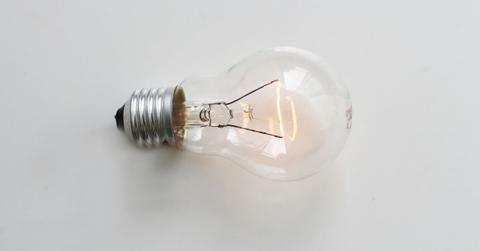Europe Is Banning Halogen Lightbulbs
The European Union is phasing out halogen lights by September 1, and encouraging consumers to buy LED instead.
Updated May 31 2019, 10:49 a.m. ET
Europe is saying goodbye to halogen lightbulbs this fall. Starting on September 1, the bulbs will be banned across all European Union countries, in an effort to get consumers to switch to LED.
Stores are allowed to sell their remaining stocks, and the EU will grant an exception for oven lights, according to The Guardian. But otherwise, halogen bulbs will exit the EU next month to make way for energy-saving alternatives.
While halogen bulbs are a widely available lighting option, they’re not the most energy-efficient. They operate at high temperatures and tend to burn out faster than LED bulbs, ultimately making them a bigger power drain and a more expensive investment. The EU currently rates halogen bulbs a “D” in energy efficiency, which is the second-lowest grade available on its scale.
By switching from halogen to LED lighting, the EU believes it can save 15.2 million tonnes of carbon dioxide emissions by 2025, a number that’s roughly equal to the emissions generated by two million people per year.
“This is a significant contribution to the fight against climate change,” Anna-Kaisa Itkonen, the European Commission spokesperson for climate action and energy, told CNN.
The energy savings should also be significant. The EU estimates the switch will reduce annual electric consumption by 48 terraWatts — the amount it takes to power all of Portugal for a year.
The cost to consumers has been a concern, since LED lights tend to cost more per bulb than halogen options. Some members of the European Parliament, like British politician Jonathan Bullock, have invoked this point to criticize the ban.
“The EU’s attempt to ban halogen bulbs is wrong because consumers will suffer financially and it’s always the poorest who suffer most from these kinds of policies,” Bullock told The Guardian. “Customers should have the freedom of choice in bulbs and it shouldn’t be imposed by the EU.”
But the EU insists the lighting will pay back its cost in a year, saving citizens about 115 Euros over the LED bulb’s lifetime, which can easily climb to 20 years.
This halogen ban has been gestating for a long time. The EU first voted to phase out the bulbs back in 2009. At that time, member nations planned to eliminate the bulbs by September 1, 2016. But the group decided countries needed another two years to adjust, and extended the deadline to September 1, 2018.
One of the issues at hand was jobs, as the elimination of halogen lamp production was predicted to eliminate 6,800 jobs with it. The EU hoped the extended deadline would “give manufacturers the time to create replacement jobs in these areas, while supporting innovative companies in the EU providing novel lighting solutions based on LEDs.”
It’s unclear if that happened, but the EU certainly isn’t alone in its crusade against halogen lighting. Australia is also in the process of phasing out these bulbs, and many other countries are implementing incandescent bulb bans to push consumers towards LED. (There’s a very lengthy Wikipedia page about it.) If the trend continues, LED could be the default light bulb — instead of an expensive alternative — in just a few years' time.
